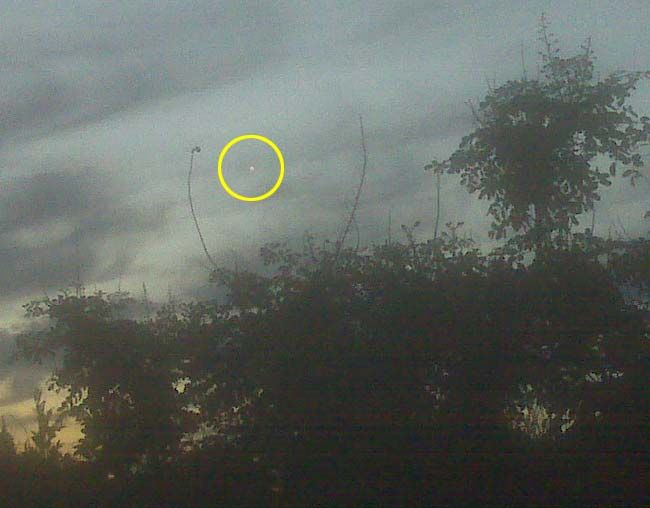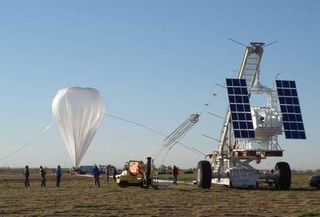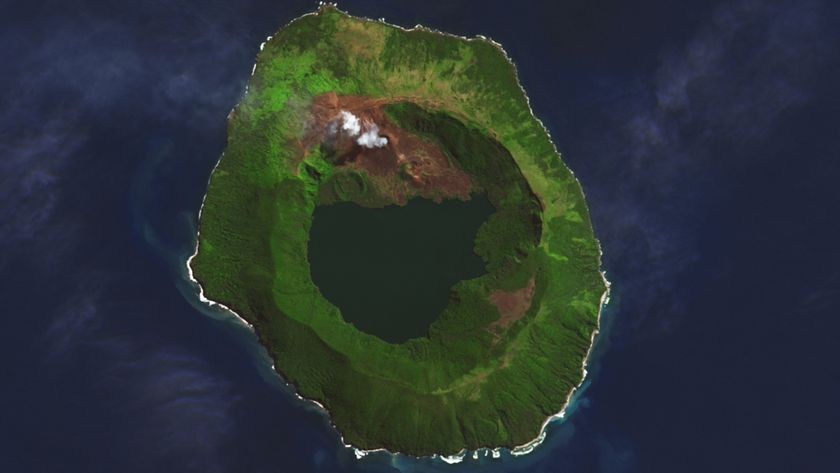Bright Light Over Phoenix Is a Giant Balloon

PHOENIX, AZ—In a near-repeat of an event last month, a high-altitude NASA-supported research balloon floated over Arizona Thursday afternoon, June 11. It was easily visible, to the north, from northern Phoenix.
And for those who didn't know what it was, it was oddly bright and suspiciously slow moving. (Already Thursday evening, as I was writing this, the local paper's web site was reporting sightings of something "really strange" and "freaky." An airport official called it a weather balloon. Yeah. A huge one.)
I happened to see both events, mostly because I drive a Jeep with no top and the balloons seem to pass over our state right when I'm shuttling my son to Tae Kwon Do. I sort of knew what the first one was. Actually, I figured that one was a weather balloon, whatever a weather balloon is, but I grossly underestimated its size. I learned later that these things are big as a football field and weigh as much as an SUV. They fly as high as 120,000 feet — well above jet airplanes and even above, and behind, the clouds.
This time I was relatively certain what I was seeing, given the experience of the last one. I pointed it out to my family and neighbors ("Really?! That's it?! Well, that's kind of boring," said the adults. "Cool," said the kids.) and proceeded to watch the balloon off and on from late afternoon until after sunset and snapped several photos with my Blackberry; the first pics, during daylight, frustratingly did not resolve the balloon, proving that smart phone cameras stink.
Meantime, a quick web search yielded an online tracking map from NASA and the Columbia Scientific Balloon Facility, which confirmed a balloon had been launched today and was floating over Prescott, Arizona during the time I was observing it.
The previous event in May prompted some to think a UFO was over the state, or at least something inexplicable (Phoenix is known for its UFO sightings).
So this time, I figured it would be useful to offer some observation notes on a very explicable event:
Sign up for the Live Science daily newsletter now
Get the world’s most fascinating discoveries delivered straight to your inbox.
This balloon at first looked like a tiny gelatinous teardrop on the afternoon of June 11, 2009. It moved east-to-west, imperceptibly slowly. It seemed about the size of a faraway, floating birthday-party balloon, but seemingly much higher. My son said it was about half the size of an ant. It was silvery in the afternoon sun, then ducked in and out of the clouds near sunset, when its shape became more disc-like. Even after sunset, the balloon — flying so high — was brilliantly lit by the sun. It was far brighter than the planet Venus (the evening star, sometimes barely visible in daylight), but perhaps less bright than the full moon, though the reflected sunlight was more concentrated. If the moon is this fuzzy O, then the balloon was all the light of that O concentrated into this degree symbol: °.
And finally, after sunset, the contrast was greater and I got a really grainy photo from my Blackberry. It was far more dramatic to the naked eye, trust me.
Here's what these balloons look like before launch:

Robert Roy Britt is the Editorial Director of Imaginova. In this column, The Water Cooler, he looks at what people are talking about in the world of science and beyond.
Robert is an independent health and science journalist and writer based in Phoenix, Arizona. He is a former editor-in-chief of Live Science with over 20 years of experience as a reporter and editor. He has worked on websites such as Space.com and Tom's Guide, and is a contributor on Medium, covering how we age and how to optimize the mind and body through time. He has a journalism degree from Humboldt State University in California.











